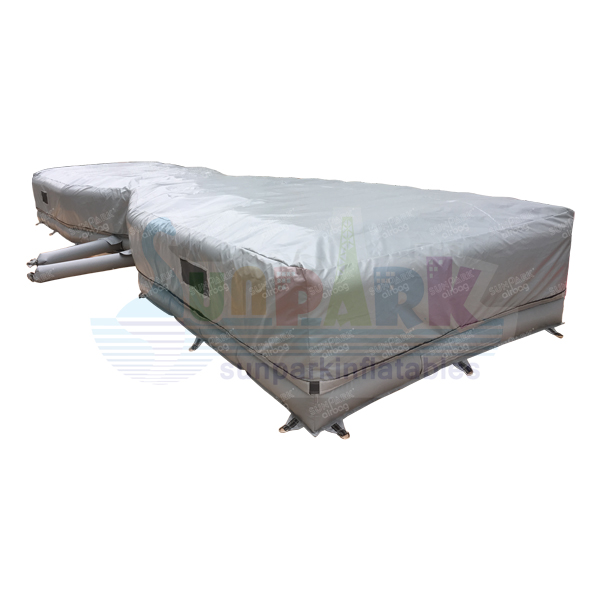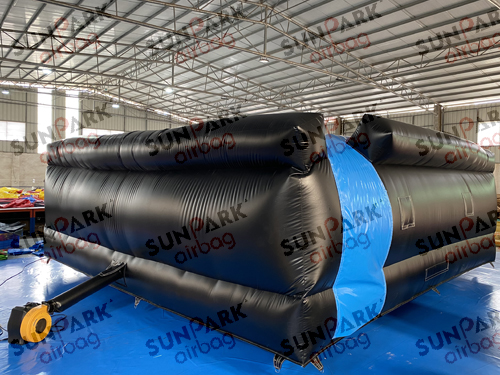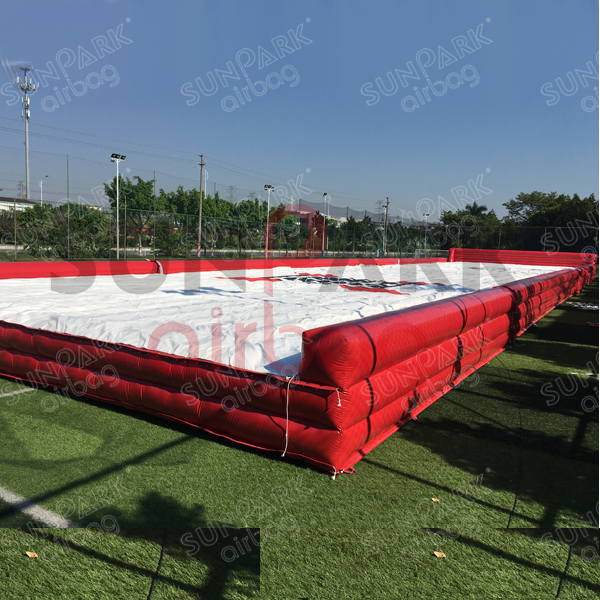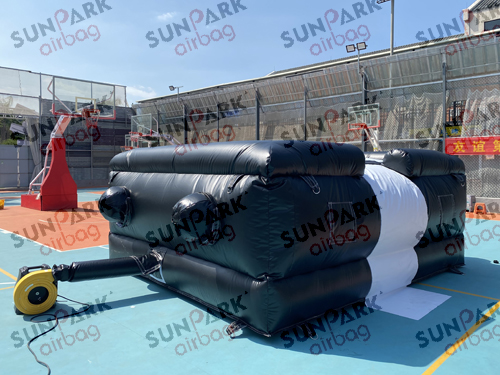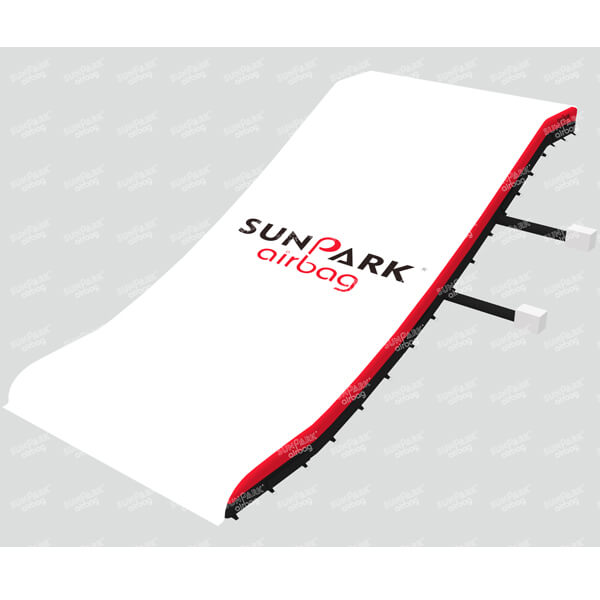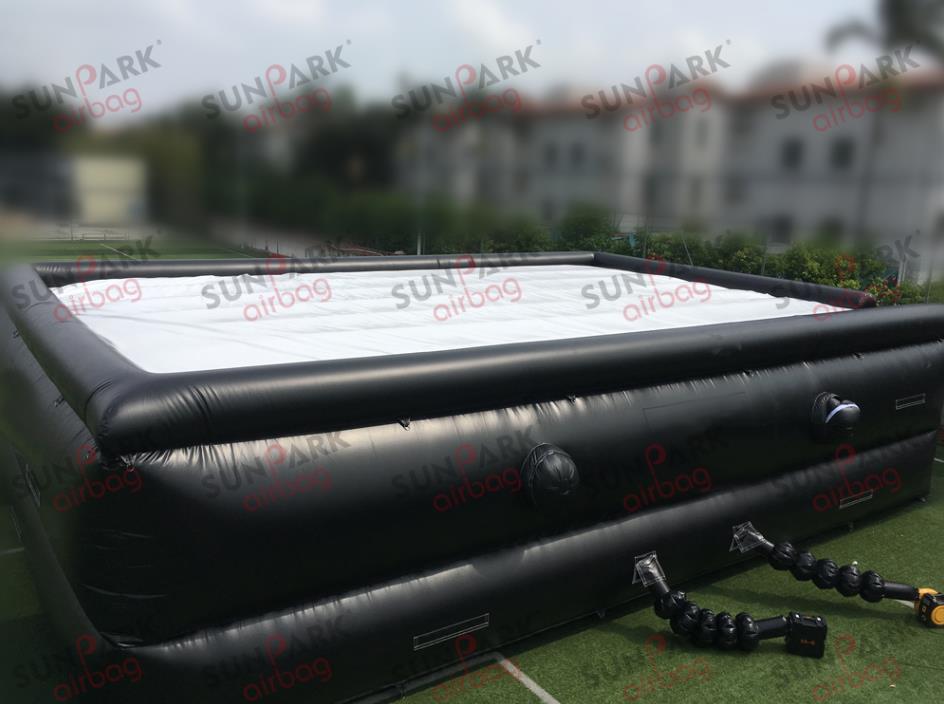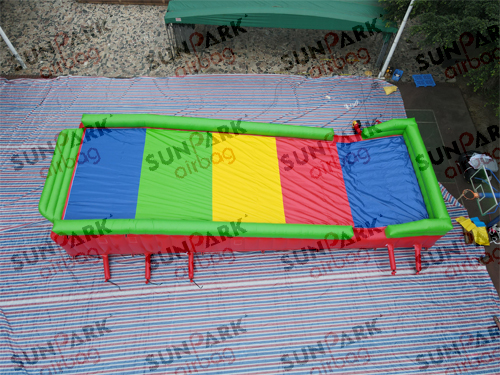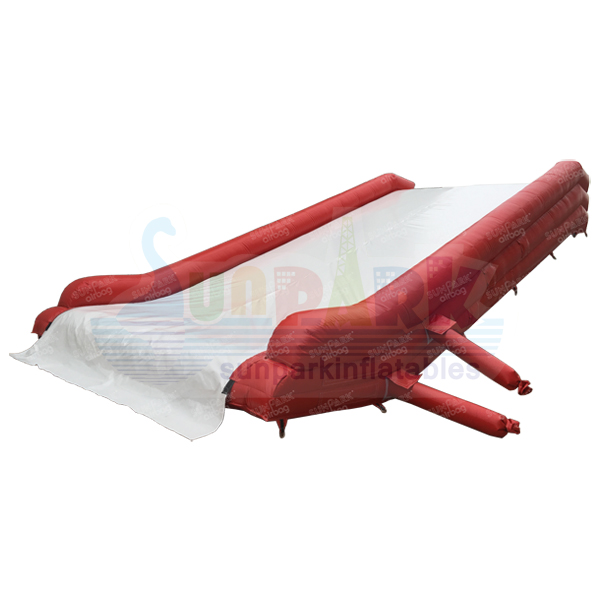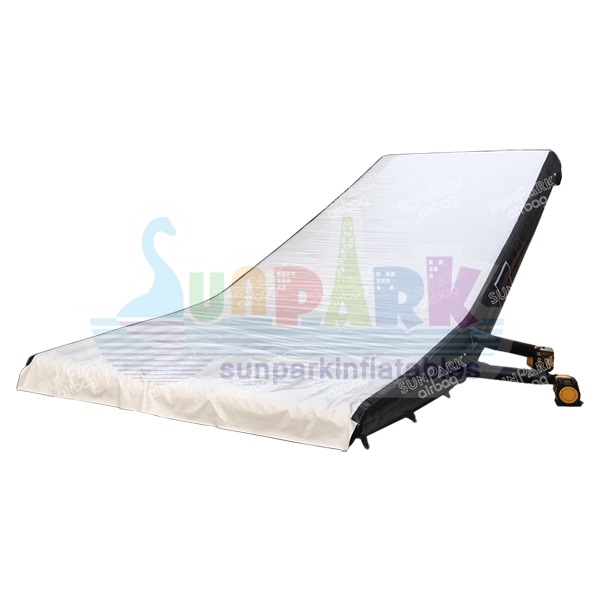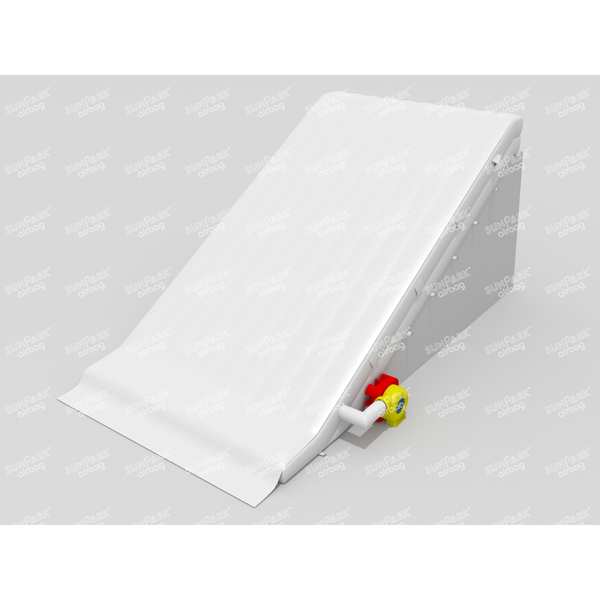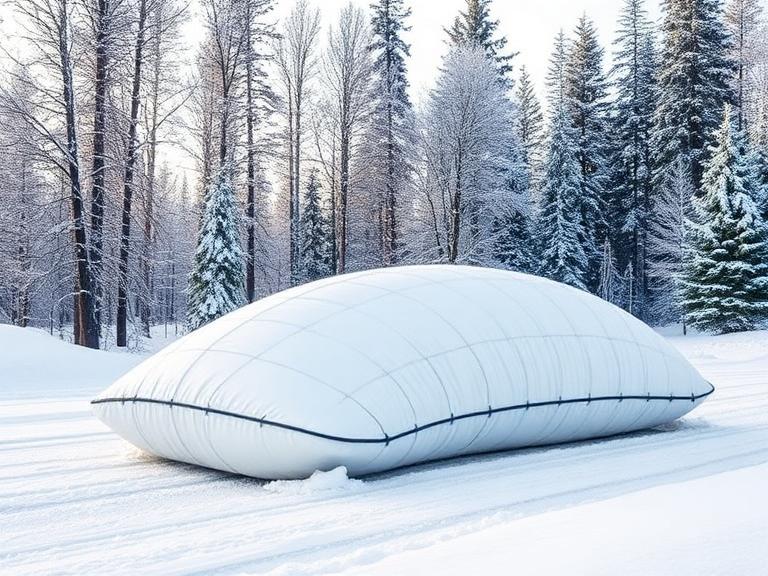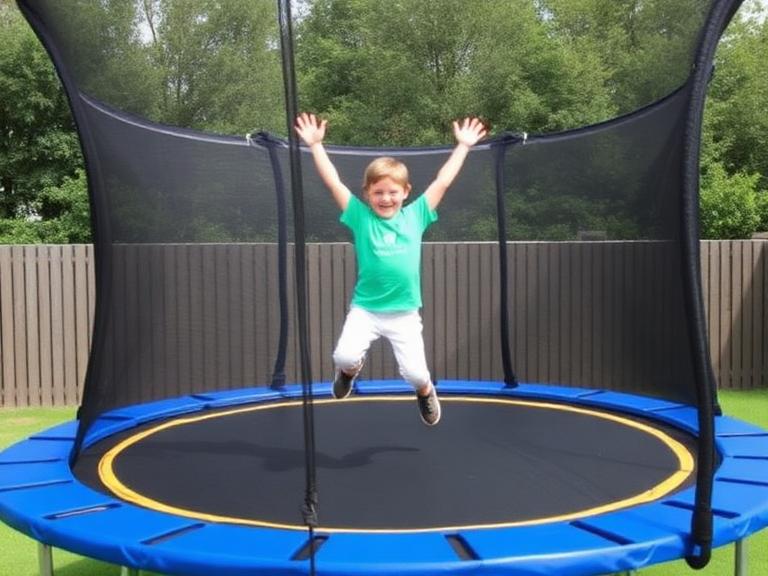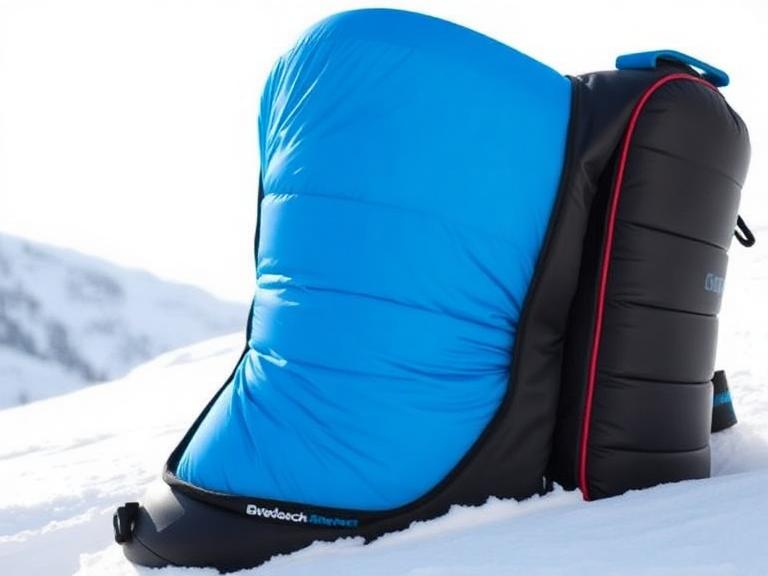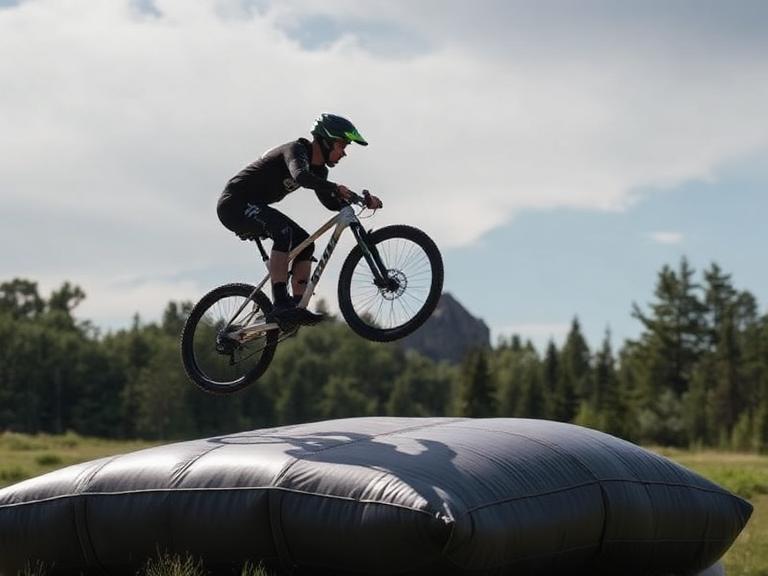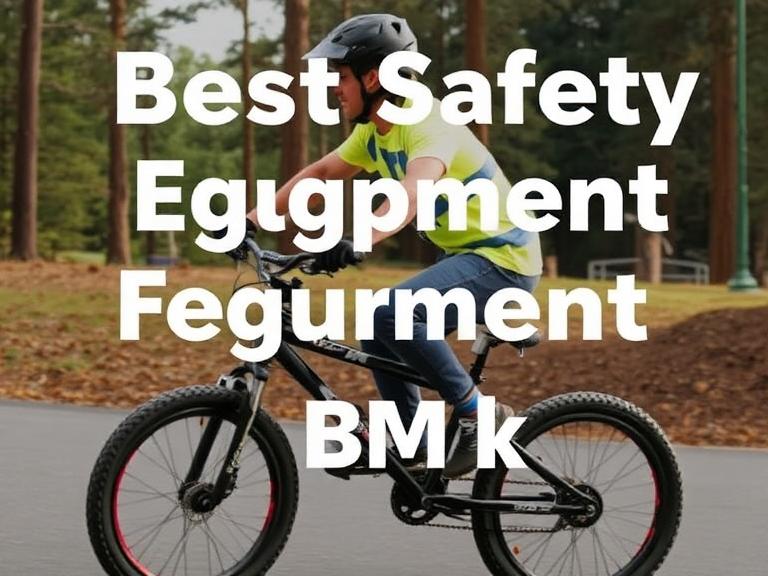Snowboarding airbags have revolutionized the way riders practice and perfect their tricks. Whether you’re a beginner looking to master the basics or an experienced snowboarder aiming to refine your skills, using an airbag provides a safe and controlled environment to push your limits. In this guide, we’ll explore various techniques to try on a snowboarding airbag, from spins and flips to grabs and combinations.
By following these tips, you can confidently enhance your performance and take your snowboarding to the next level while minimizing the risk of injury. Get ready to elevate your game and land those impressive tricks with ease!
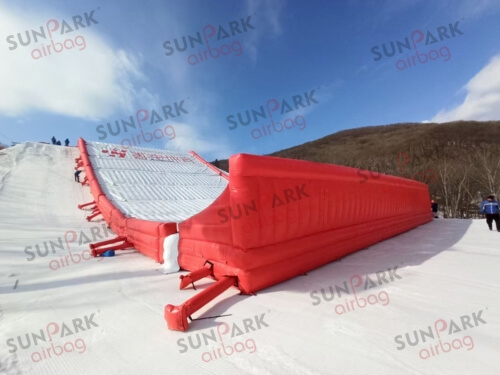
What is a Snowboarding Airbag?
A snowboarding airbag is an inflatable cushioning system designed to provide a soft landing for snowboarders practicing aerial tricks. This safety equipment is typically large, padded, and placed strategically at the base of a jump or slope to absorb impact, reducing the chance of injury during falls. Airbags are commonly used during training sessions to help riders develop their skills with an added layer of protection.
Ski resorts, training facilities, and even individual riders are increasingly using snowboarding airbags to create safer learning environments. These facilities allow riders to attempt high-risk maneuvers without the same consequences as falling on hard snow, encouraging skill progression and confidence. The presence of airbags can also attract enthusiasts looking for a safe way to push their limits and learn new tricks.
Why Use a Snowboarding Airbag?
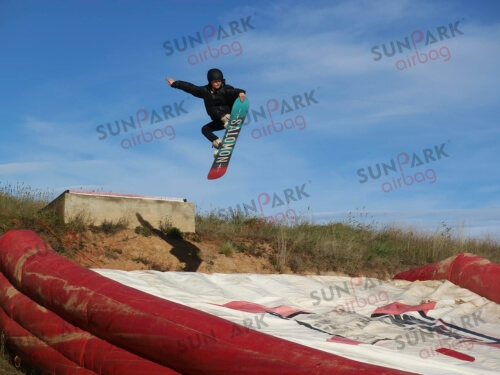
Snowboarding airbags provide a valuable training tool for snowboarders of all levels, offering a safe and controlled environment to practice aerial maneuvers. While nothing can replace training on real snow, airbags offer a significant advantage when:
Snow Conditions are Unfavorable: During the off-season, when snow is scarce or of poor quality, airbags allow riders to continue practicing and progressing their skills.
Cost is a Factor: Building and maintaining snow parks can be expensive. Airbags offer a more cost-effective solution for training facilities, making snowboarding accessible to a wider range of athletes.
Safety is a Priority: Airbags provide a softer landing surface than snow, reducing the risk of injuries, especially when learning new and challenging tricks.
Professional athletes still spend a considerable amount of time training on real snow, as this closely replicates the conditions they will face in competitions. However, snowboarding airbags play a crucial role in supplementing their training and allowing them to practice high-risk maneuvers with a reduced risk of injury.
Tips for Using a Snowboarding Airbag
When using a snowboarding airbag, it’s crucial to start with basic jumps and progress gradually. Always inspect the airbag before use, ensuring it is fully inflated and free of any damage. Practice with proper form, aiming for the center of the airbag, and always ride away from the landing to clear the area for others. Follow these tips to use a snowboarding airbag:
Inspect the Airbag Before Use
Before each session, thoroughly inspect the snowboarding airbag to ensure it’s in optimal condition. Check for any visible damage, such as tears, punctures, or abrasions, that could compromise its integrity. Verify that all seams and valves are intact and functioning correctly. Confirm that the airbag is fully inflated and that the inflation system is working properly.
Follow Instructions from the Manufacturer
Adhering to the manufacturer’s instructions is essential for safe and effective use of the snowboarding airbag. Review all provided guidelines regarding inflation, setup, and usage to ensure proper operation. The manufacturer’s instructions will often include specifics on how to adjust air pressure for different types of jumps and landings, as well as maintenance recommendations.
Adjust the Airbag Pressure for Optimal Performance
Adjusting the airbag pressure is critical for optimal performance. Too much pressure can lead to a bouncy landing, while too little can cause the rider to sink too deeply into the airbag. Regularly check and modify the airbag’s pressure to match the rider’s weight, the ambient temperature, and the desired firmness for the day’s training.
Start with Lower Heights
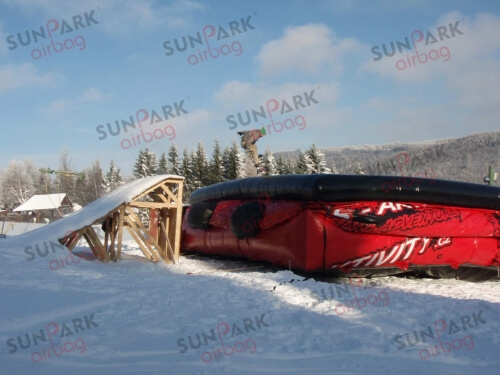
When first using a snowboarding airbag, begin with lower jumps and smaller heights. This approach allows you to acclimate to the airbag’s cushioning and landing dynamics gradually. Practicing on smaller jumps helps you understand how the airbag absorbs impact and gives you a sense of how to adjust your technique.
Aim for the Center
To maximize the effectiveness of the airbag and ensure a safe landing, aim to land in the center of the airbag. The center area is typically designed to offer the most cushioning and evenly distribute the impact forces. Landing off-center can result in uneven impact, which might increase the risk of injury or cause the airbag to shift.
Clear the Landing Area Quickly
After completing a jump or trick, promptly clear the landing area to prevent collisions with other snowboarders. The airbag is often used by multiple individuals, and remaining on or near the landing zone can pose a hazard to others waiting to use it. Move off the airbag as soon as possible after landing to ensure a smooth flow of activity and maintain a safe environment for all participants.
Ensure Visibility and Safety
For optimal visibility and safety, especially during nighttime training or in low-light conditions, it’s essential to ensure adequate lighting around the airbag landing area. Use bright, focused lighting to illuminate the airbag itself, the takeoff ramp, and the surrounding area. Clear signage and guidelines should also be present to highlight the airbag’s perimeter, ensuring riders are aware of the landing zone boundaries.
Manage Airbag Use in Windy Conditions
High winds can affect the stability and performance of a snowboarding airbag. It’s crucial to monitor wind conditions and secure the airbag properly using the provided anchoring system to prevent it from shifting or overturning. If winds become too strong, temporarily deflate the airbag or adjust its position to ensure it remains a safe landing platform.
Airbag Use in Crowded Areas
In crowded training environments or events, it is vital to implement a clear system for managing airbag use. Snowboarders should take turns, communicate effectively, and wait for their turn in a designated area. Keep the landing zone free of obstacles, and immediately exit the airbag after landing to minimize the risk of collisions.
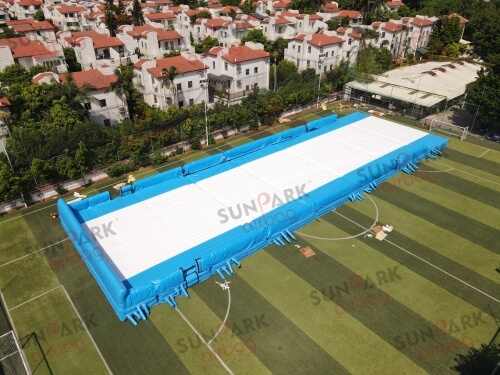
Techniques to Try on a Snowboarding Airbag
For those ready to test their skills, the snowboarding airbag is ideal for practicing spins, flips, and grabs. Start with simpler tricks and gradually work up to more complex maneuvers as confidence and ability grow. Always wear appropriate protective gear and proceed with caution.
Spins
Spins are fundamental tricks that can be perfected with the help of an airbag, allowing riders to practice rotations like the 360, 540, and 720 spins safely. A 360 spin involves a full rotation in the air and requires balanced takeoff, early landing sighting, and a compact body position. The 540 spin adds an extra half rotation, needing more airtime and precise control, while the 720 spin involves two full rotations and demands significant airtime and body control.
Flips
Flips involve inverting the body and require commitment and spatial awareness. Snowboarders use airbags to practice flips, which provide a soft landing and boost confidence. The backflip requires a strong takeoff, a tucked body, and awareness of the landing. The front flip demands precise timing and a strong pop from the jump. The corked flip combines flipping and spinning, initiated by an off-axis rotation with a shoulder dip.
Grabs
Grabs add style and stability to snowboarding aerials by letting riders hold their snowboard while in the air. The melon grab involves reaching with the front hand behind the back foot to grab the heel edge. The indy grab uses the trailing hand to grab the toe edge between the bindings, requiring a powerful takeoff and knee tuck. The mute grab is done by reaching across the body with the front hand to grab the toe edge in front of the front foot.
Combinations
Mastering combinations on a snowboarding airbag allows riders to link multiple tricks, enhancing their aerial acrobatics. A combination might involve a spin followed by a grab or a series of flips with varying grabs in between. To execute these complex maneuvers, riders must develop a strong sense of timing and body awareness. It’s crucial to practice each element separately before attempting to combine them.
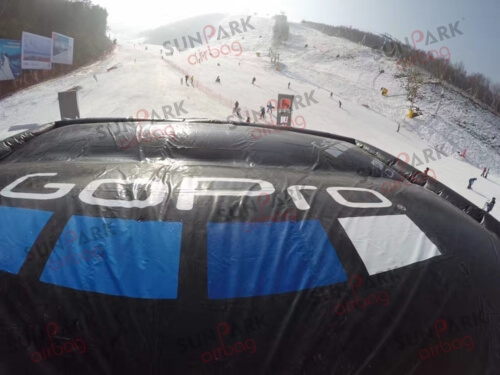
Wrap-Up!
Incorporating a snowboard airbag into freestyle skiing and snowboarding enhances safety, allowing riders to push their limits with greater confidence. Through proper selection, adjustment, and usage of an airbag, enthusiasts can tackle challenging maneuvers while mitigating the risk of severe injuries. It’s essential that users not only master the techniques but also follow all safety guidelines provided by the snowboarding airbag manufacturer.

